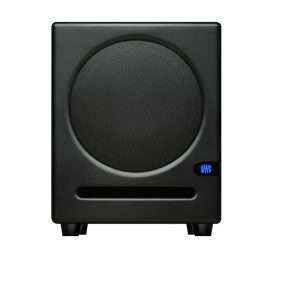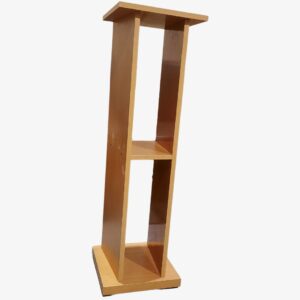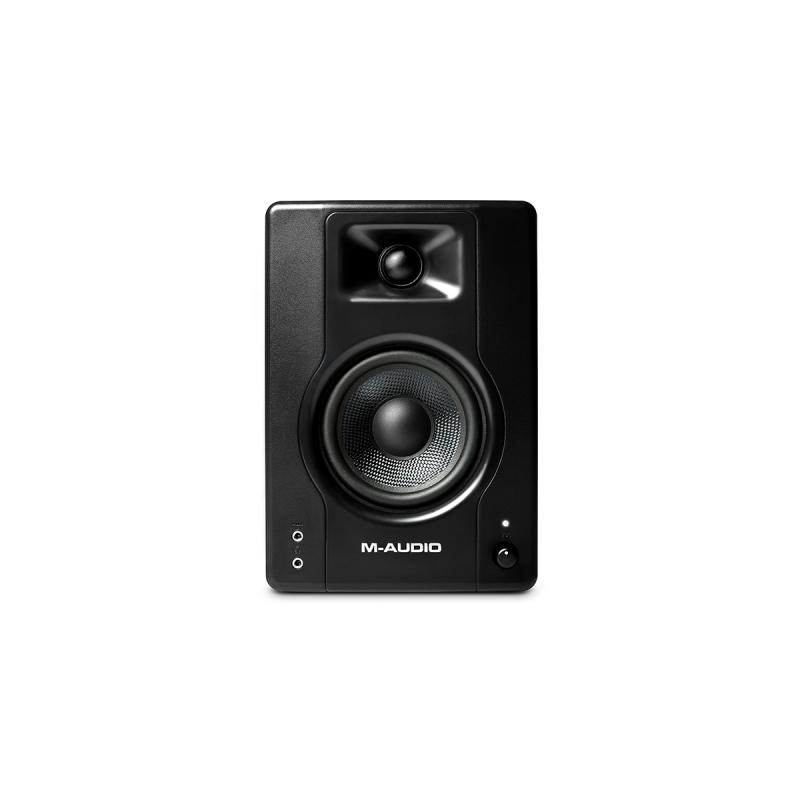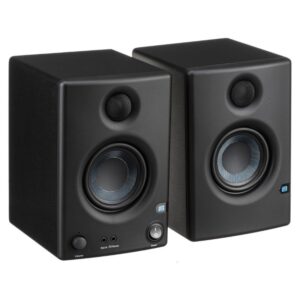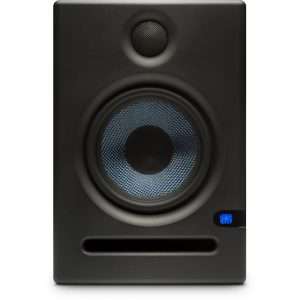Description
The Yamaha HS3 is an ideal choice for those who need a small, accurate, and affordable studio monitor for near-field monitoring in smaller rooms. It offers the same neutral sound that Yamaha’s HS series is known for, its a reliable option for mixing and audio production in environments where space is limited.
While its low-end response is not as extended as larger monitors, it is a great solution for precise work, especially in smaller studio setups. Pairing the HS3 with a subwoofer could also expand its bass capabilities for a broader range of genres.
Design and Dimensions:
- Compact Size: The HS3 features a 3-inch woofer and a 1-inch tweeter. It is designed to be highly portable and space-efficient while still offering high-quality sound reproduction.
- Dimensions: Approximately 7.1 inches (H) x 5.7 inches (W) x 6.5 inches (D).
- Weight: Around 7.5 pounds (3.4 kg), making it easy to transport and place in small spaces.
- Like other models in the HS series, the HS3 has a MDF (Medium Density Fiberboard) enclosure, ensuring that vibrations and resonances are minimised to maintain a clear and accurate sound.
- The speaker features a bass-reflex design with a rear port to improve the bass response.
- The HS3 is typically available in a white or black finish with the signature white-coned look that Yamaha’s HS monitors are known for, giving it a sleek, modern appearance that fits well into any studio or workspace.
2. Driver Components:
Woofer:
- 3-inch cone-type woofer: The woofer uses a high-quality cone that helps maintain accurate bass response and lower distortion, even at higher volumes.
Tweeter:
-
- 1-inch dome-type tweeter: The tweeter is made from neodymium material, designed to provide crisp and detailed high-frequency reproduction with minimal distortion.
3. Performance and Sound Quality:
Frequency Response:
-
- The HS3 offers a frequency response of 65 Hz to 20 kHz. While its bass response is not as deep as the larger HS models (like the HS5, HS7, or HS8), it still delivers a solid, clear midrange and high-end performance.
Accuracy and Transparency:
- The Yamaha HS series is renowned for its transparent, uncoloured sound, and the HS3 is no exception. It provides a flat frequency response that delivers a clear, honest representation of the audio being played.
- The HS3 is ideal for near-field monitoring in smaller spaces, where it can accurately represent the audio without distortion or hyped frequencies.
- The midrange is clear and detailed, making it excellent for vocal-heavy music, dialogue editing, or instruments that require high precision.
High Frequencies:
-
- The high frequencies are precise, crisp, and clean. The 1-inch tweeter delivers a smooth response up to 20 kHz, which helps in accurate mixing, particularly for vocals, strings, and high-end percussion.
4. Amplification and Power:
-
- The HS3 is powered by an
integrated Class D amplifier
-
- Providing 40 watts of total power (30W for the woofer and 10W for the tweeter).
-
- The
bi-amp design
- (separate amplifiers for the woofer and tweeter) improves efficiency, allowing for better headroom and clearer, more precise audio reproduction
-
- Providing 40 watts of total power (30W for the woofer and 10W for the tweeter).
5. Room Control and Adjustments:
-
-
- The HS3, like other models in the HS series, includes a Room Control and High Trim switch on the rear panel.
-
-
- This allows for attenuation of low frequencies, helping compensate for excessive bass buildup in certain room environments (e.g., corners or small spaces).
- This adjusts the high-frequency response to adapt to the listening environment, particularly useful for tailoring the sound in rooms with reflective surfaces or acoustic anomalies.
6. Input Options:
- The HS3 is equipped with XLR and TRS 1/4-inch balanced input connectors. This allows the speaker to connect easily to professional audio equipment, ensuring compatibility with a wide range of audio sources, such as audio interfaces, mixing consoles, and more.
7. Yamaha Hs3 Room Compatibility:
-
- The Hs3 is well suited for Small Room, home studios, & offices..
- Its small size makes it perfect for cramped studio spaces, where larger monitors may be impractical.
- The Hs3 is well suited for Small Room, home studios, & offices..
8. <strong>Advantages yamaha hs3:
-
-
- The HS3 is one of the smallest active monitors in the Yamaha HS series, making it ideal for tight spaces or portable setups.
- As with all Yamaha HS monitors, the HS3 provides an accurate and neutral sound, making it suitable for precise mixing and audio work.
-
The HS3 is relatively budget-friendly, making it an excellent choice for home studios or beginners who want a high-quality, transparent monitor without breaking the bank.
-
-
- Its compact size and moderate output make it a good option for users with limited space or those who do not need extensive bass output.
- The HS3 uses MDF construction</strong>, providing a solid, durable cabinet with reduced resonance, ensuring that the speaker performs well over time.
-
9. Disadvantages yamaha hs3:
- Due to the small 3-inch woofer, the HS3 does not produce deep bass, making it less suitable fo
-
- Users mixing bass-heavy genres or those who need more extended low frequencies might want to pair the HS3 with a subwoofer for fuller bass response genres or tasks that require powerful low-frequency reproduction.
























